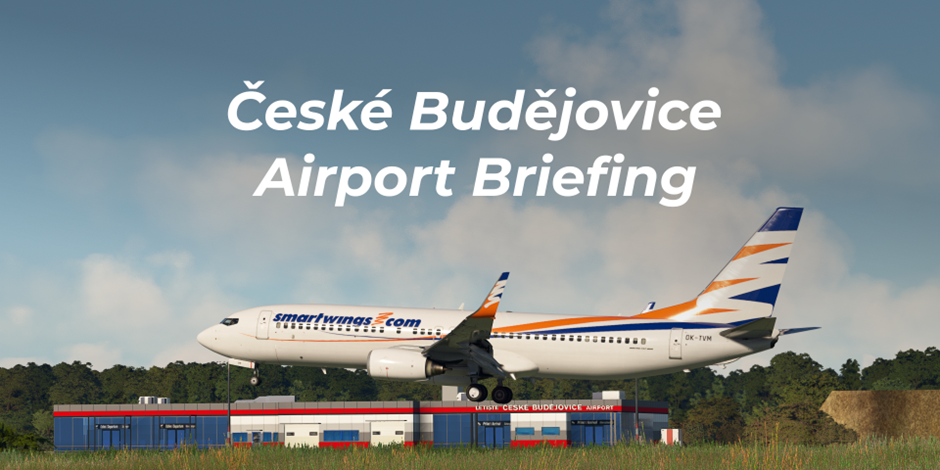¶ České Budějovice Airport
The information in this document is not intended for real aviation. It is only intended for computer-based flight simulation.

České Budějovice Airport (LKCS/JCL) is one of the regional airports in the Czech Republic. International flights for travel agencies were launched in 2023, when the modernisation of the airport and the construction of a new terminal was completed. The meaning of the IATA code "JCL" is Jihočeské letiště (South Bohemian Airport in Czech).
In the real world, the České Budějovice airport is non-towered (uncontrolled), and information for aircraft operation is provided by AFIS. It is also the first non-towered airport in the Czech Republic where IFR procedures have been introduced.
This document summarizes essential information you should know for a realistic flight simulator experience.
For more information, please refer to the real-life Aeronautical Information Publication (AIP):
https://aim.rlp.cz/ais_data/www_main_control/frm_en_aip.htm
¶ Scenery
Recommended LKCS scenery for MSFS:
JezevecCZE - freeware
Recommended LKCS scenery for X-Plane:
tdg - freeware
¶ Arrival
Approach procedures (STARs) marked by T suffix (e.g. TABEM1T, ADLET2T) avoid Class E space, and are assigned only on pilot's request – otherwise procedures marked with an N are assigned.
ILS approach is available for runway 27. There are no published approach procedures for runway 09, only circling approaches can be made. Circling is only permitted south of the aerodrome (right hand circuit for runway 09). The PAPI descent angle for runway 09 is 4° (due to a forest in the approach area – as a reminder, the standard angle is 3°).
The threshold of runway 27 is permanently displaced by 300 metres to the west.
Code C aircraft (A320, B737) may only use TWY B and Apron Middle (adjacent to the terminal). At night, this restriction applies to all aircraft.
¶ Departure
Code C aircraft (A320, B737) may only use TWY B and Apron Middle (adjacent to the terminal). At night, this restriction applies to all aircraft.
Departure procedures (SIDs) marked by E or G suffix (e.g. ADLET1E, BUDWA1G) are normally allocated. Procedures marked with the letters F and H avoid the Class E area and are only allocated at the pilot's request.
If departure using an SID is undesirable, a visual or omnidirectional departure may be made. An omnidirectional departure is flown straight ahead, with a minimum turn altitude of 3000 ft for RWY 09, and 4300 ft for RWY 27.
Departures from RWY 27 require a minimum climb gradient of 10% until reaching an altitude of 2000 ft AMSL due to the presence of terrain obstacles.
In the real world, an intense presence of migratory birds is observed in the vicinity of the airport, especially in the morning and evening hours.